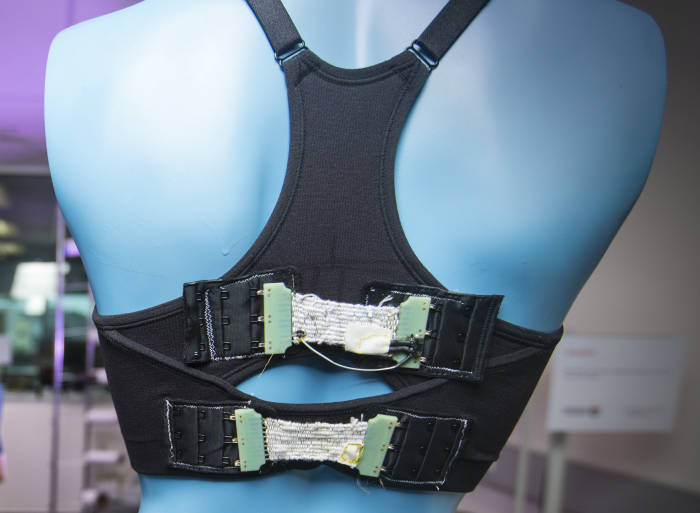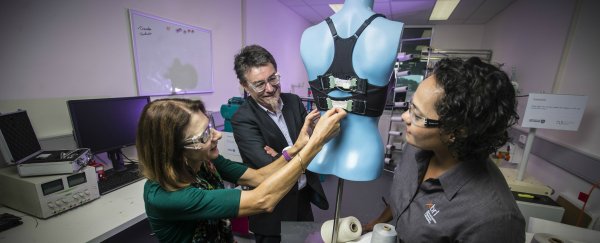Researchers at the University of Wollongong in New South Wales have created a prototype Bionic Bra using a high-tech thread that has sensing components woven into it. This thread is used to create "artificial" muscles that allow the device to contract and stretch in response to an individual's breast shape, as well as their activity level.
The bra is designed to provide women with superior fit, while reducing bounce. It also means that the bra can be more versatile than current options on the market - it can fit like a comfortable t-shirt bra while you're at your desk, but then automatically tighten into a sports bra when you, say, get up to run for a bus.
Right now women are stuck with either one or the other, and it's led to a lot of people wearing inappropriate bras and experiencing discomfort.
In fact, a recent study by the University of Portsmouth revealed that almost one in five women avoid exercise because they experience problems with their beasts, such as excessive bounce or pain.
In addition, the Breast Research Australia team at the University of Wollongong team found that around 85 percent of women we an incorrectly fitted bra, which can cause backaches, neck pain and headaches.
To fix the problem, they've been working on the Bionic Bra for more than 15 years, and studying the problems associated with sports bras and women's breasts during physical activity.
 Paul Jones/University of Wollongong
Paul Jones/University of Wollongong
"We were inspired to make a bra that could respond to the needs of women - to tighten up when there is a need for more breast support but to relax when additional support is not required, so women could enjoy the health benefits associated with an active lifestyle in comfort," said Julie Steele, Director of Breast Research Australia, in a press release. "'Unfortunately, the most supportive sports bras tend to be the most uncomfortable to wear."
However, it's only recently that the technology to create such a responsive item of clothing has caught up.
The Bionic Bra prototype is made up of customised fibres that the team developed using wet spinning techniques. This involves sensing fibres being "knitted" into soft, wearable structures, which are then controlled by actuators, which are hidden at the back of the bra.
"Our ability to make things from advanced materials has been greatly enhanced recently with the advent of new approaches to fabrication," said electromaterials expert Gordon Wallace, who worked on the bra, in the release.
"The advent of approaches such as 3D printing has enabled us to assemble structures containing new sensing technologies to more accurately monitor movement and new artificial muscle technologies to control it," he added.
Right now the bra looks pretty cumbersome, and the researchers admit it will be a while before we see it move from lab bench to washing machine. In fact, some aspects of the bra may not be able to be washed at all, so this will need to be worked into design.
But they're hoping that in the short-term they'll be able to modify the bra enough to being testing it on active women who need additional support during exercise. And then in the future they will look at updating the design and creating every day models that look as good as they feel.
"Results indicate that our technologies can sense breast motion and provide additional breast support. The challenge now is to integrate these technologies into a functional, comfortable bra," said one of the Bionic Bra team members, Sheridan Gho, in the release.
We're excited. And the results are definitely more promising than this 2013 study by a French male scientist (of course), which concluded that women are better off not wearing bras at all. No, thank you.
Source: University of Wollongong
